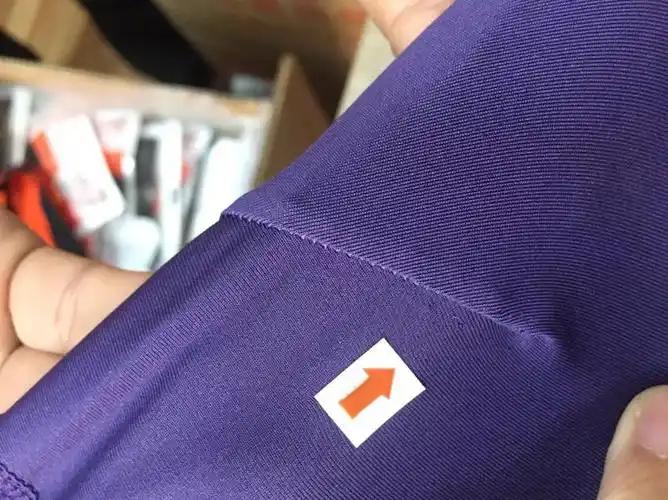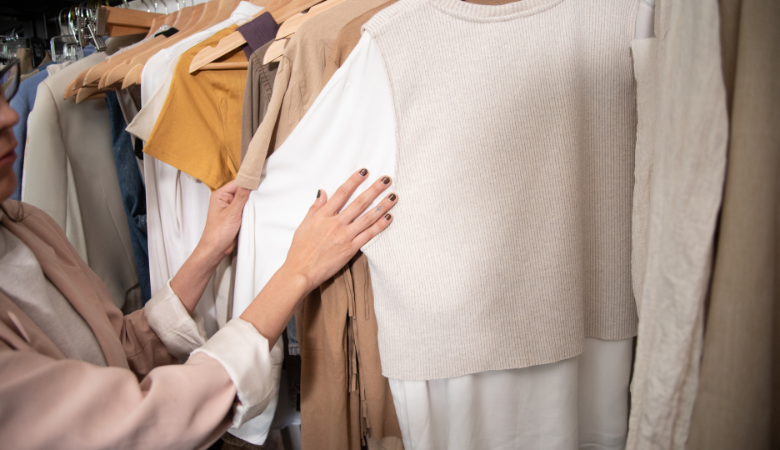
Delivering good products is key to success in clothing. Apparel and garment quality control testing ensures that clothes meet what customers want. It protects your brand by stopping bad items from selling. Fixing problems early saves money on production mistakes. Testing clothes also makes sure they work well and last longer. Focusing on quality builds customer trust and helps you compete better.
Quality control and quality assurance in apparel
What is quality control in making clothes?
Quality control checks if clothes meet set standards before selling. It looks at fabric, stitching, and how items are made. This process finds mistakes and keeps products consistent. By using quality control, bad clothes stay out of stores. This saves both time and money.
What does quality assurance do?
Quality assurance creates rules to keep quality high during production. Unlike quality control, it stops problems before they happen. For example, workers might get training or follow fabric rules. These actions help make sure clothes are always well-made. Quality assurance gives customers trust by offering dependable products.
How are quality control and quality assurance different?
Both aim to keep quality high but work differently. Quality control checks finished clothes for mistakes. Quality assurance improves steps to stop errors early. Think of quality control as fixing problems and quality assurance as preventing them. Together, they make sure clothes meet what customers want.
Steps in the garment quality control process
Pre-production quality control measures
Pre-production checks stop problems before making clothes starts. First, inspect raw materials like fabric and trims. Make sure the fabric meets standards for color, feel, and strength. Look for issues like uneven colors or small tears.
Test how the fabric performs too. Check if it shrinks, keeps its color, or stretches well. This ensures it works during production and use. Clear rules for fabric and design prevent confusion later.
Tip: Use a checklist for pre-production checks. It helps your team stay organized and not miss anything.
Quality control during the production phase
During production, check that each piece meets your standards. Watch stitching, seams, and how items are made. Regular checks during sewing catch mistakes early. For example, you might find loose threads or uneven stitches to fix.
Check sizes and fit too. Pick random samples to see if they match the design. Fix any problems right away to avoid bigger issues.
Use visual checks to keep things consistent. Train your team to spot flaws fast and fix them.
Post-production inspections and final quality checks
After production, check finished clothes to ensure they're ready to sell. Start with a close look for problems like stains, missing buttons, or bad seams.
Test how things work too. Make sure zippers, snaps, and fasteners work well. Check packaging and labels to see if they meet your rules.
Note: Post-production checks protect your brand. They make sure only good clothes reach your customers.
Finally, do random checks on the batch. This step ensures all items meet your standards. Fix any problems before shipping them out.
Methods and tools for apparel and garment quality control testing
Visual inspection techniques for garment quality control
Looking closely at clothes helps find visible problems. This method spots issues like bad stitching, loose threads, or fabric flaws. Teach your team to notice these problems quickly and correctly.
Keep things consistent during production checks. Compare clothes to approved samples to match designs. Use tools like magnifying glasses or fabric check machines to find small mistakes.
Tip: Make a checklist for visual checks. It keeps your team organized and ensures nothing is missed.
Lab-based testing methods for fabric and garment performance
Lab tests use science to check fabric and garment quality. These tests measure fabric strength, shrinkage, and color staying power. Special machines test how fabrics handle different situations.
For example, strength tests show how much pull fabric can take before ripping. Shrinkage tests check if fabric stays the same size after washing. Color tests make sure colors don't fade or run.
Note: Lab tests show how strong and reliable your clothes are. They ensure your products meet rules and make customers happy.
Practical tests for durability, functionality, and aesthetics
Practical tests mimic real-life use to check garment quality. Test zippers, buttons, and seams to see if they work well. Stretch clothes to check elasticity and how they bounce back.
Durability tests see how clothes handle wear and tear. Rub fabric on rough surfaces to check for pilling or fraying. For looks, check clothes under different lights to see if colors match.
Callout: Practical tests connect lab results to real-life use. They make sure clothes look nice, feel good, and work well every day.
Overcoming challenges in garment quality control
Common issues in quality control for apparel
Keeping quality high in clothing production can be tough. Fabric problems often cause delays. For instance, uneven colors or weak threads may ruin items. Misunderstandings between workers can also lead to mistakes. Some might not follow design rules or skip important steps in the qa process in garment industry tasks.
Human mistakes during checks are another issue. Even skilled workers can miss small flaws, especially when rushed. Making more clothes at once can also lower quality. As production grows, keeping every item the same gets harder.
Note: Spotting these problems early helps you fix them quickly.
Solutions to address quality control challenges
To solve these problems, start with clear quality rules. Write detailed steps for picking fabric, sewing, and finishing. Train your team often so they know these rules well. Use pictures or checklists to help workers follow directions better.
Using machines in the qa process in garment industry can cut down on errors. Machines can check fabric strength or seam lines more accurately. To fix communication issues, use shared tools to update and track tasks. This keeps everyone informed.
Also, do regular reviews to find weak spots in your process. Use what you learn to make things better and avoid repeated mistakes.
Leveraging technology to enhance garment quality control
Technology can greatly improve clothing quality checks. Digital tools with cameras find flaws faster than people can. They spot problems like bad stitching or fabric issues with precision.
Smart devices on production lines track fabric tension and heat in real time. This data helps keep quality steady during production. Cloud systems also make the qa process in garment industry easier. Teams can store and access reports from anywhere.
TradeAider’s Commitment to Excellence in Apparel Quality Control
As a leading and trusted inspection and QA service provider, TradeAider is driven by visionary goals and a mission to deliver unparalleled quality. Their core strengths include the founder's dedication and extensive experience in global trade and manufacturing, combined with our vast network of over 80,000 quality control specialists worldwide. These experts are strategically placed throughout the production cycle to ensure meticulous attention to detail at every stage. Assisted by the innovative TradeAider App, we guarantee successful quality assurance for every service order placed by our clients. We are proud to be part of Amazon's Service Provider Network (SPN) for quality control, standing alongside industry leaders.
What Sets TradeAider Apart
TradeAider distinguishes itself from traditional inspection firms by offering more than just lower costs. We are far more efficient and transparent, leveraging cutting-edge digital tools to streamline our processes. Our esteemed clients can effortlessly monitor the full inspection process in real-time via the TradeAider Web App, ensuring complete visibility and control. Additionally, we provide a Free Sticker-Attaching Service to ensure that clients receive only products that are fully compliant with quality standards. To further build trust, we have a safeguard in place along with a reliable “refund commitment” that instills confidence from the very start.
Tip: Using technology improves quality, saves time, and lowers costs over time.
Best practices for quality control in apparel manufacturing
Setting and maintaining clear quality standards
Clear quality standards help make dependable clothes. Set specific rules for fabric strength, stitching, and garment design. These rules guide your team during production. For example, decide how strong fabric should be or how durable seams must stay.
Write these rules down clearly. Use pictures or diagrams to show good quality examples. Share this information with everyone working on the clothes. When everyone follows the same rules, checking clothing quality becomes easier.
Tip: Check your quality rules often. Update them to match new styles or customer needs.
Training teams on quality control procedures
Your team is key to keeping quality high. Teach them to spot problems and follow qa steps. Start by showing how to check raw materials and finished clothes. Train them to catch mistakes during sewing and assembly.
Use hands-on practice to make learning better. Let workers find loose threads or bad stitching during training. Give feedback to help them improve their skills. A trained team makes sure all clothes meet your quality rules.
Callout: Training often builds worker confidence and lowers mistakes during production.
Conducting regular audits and fostering continuous improvement
Audits check clothing quality at different times. Plan regular checks to find weak spots in your process. For example, review fabric suppliers to see if they meet your standards.
Use audit results to fix problems. If issues keep happening, change your qa steps to stop them. Ask your team for ideas to improve quality checks. Continuous improvement helps your clothes stay competitive in the market.
Note: Regular audits and updates to your qa process save time and money over time.
Quality control is very important in making clothes. It makes sure your products meet what customers want and trust your brand. Checking for quality helps avoid mistakes and saves money. Good clothes last longer, making customers happy.
Using strong quality control methods keeps you ahead in the market. Clear rules and regular checks make products more consistent. Focusing on quality assurance stops problems before they happen. This focus on quality makes your brand stronger and keeps customers loyal.
Tip: Always focus on quality control to make better clothes and grow your business.
FAQ
Why is quality control important in making clothes?
Quality control checks if clothes meet standards before selling. It keeps products consistent, stops defects, and ensures good quality. By checking clothes, you protect your brand and gain customer trust.
How often should you check during production?
Check clothes often at every step of making them. Regular checks catch problems early and make final inspections easier.
What are the main steps to check clothing quality?
First, look at raw materials like fabric and trims. Next, check stitching, seams, and fit during production. Finally, inspect finished clothes to ensure they meet all standards.
How does technology help with quality control?
Technology makes checks faster and more accurate. Tools like cameras and sensors find flaws better. Cloud systems help teams share and track quality data easily.
Why does clothing quality matter for your business?
Good quality clothes make customers happy and loyal. They last longer and work better, helping your business compete in the market.



